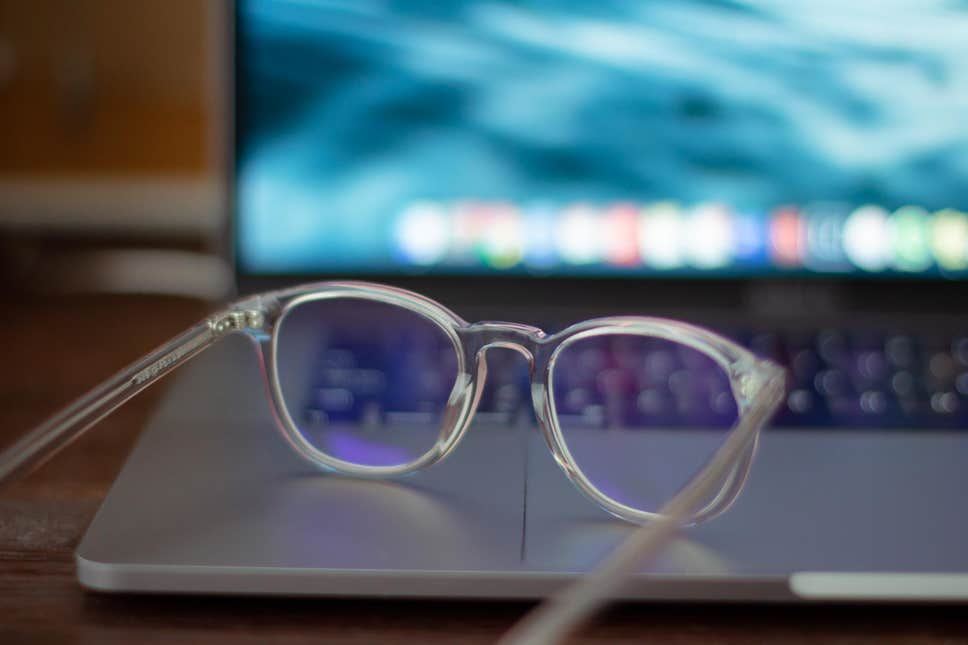Blue Blocking Lenses
Blue Light and the Macula
Studies have shown that by reducing blue-light transmission through blue blocking lenses by 50%, approximately 80% of photochemical damage to the retina could be reduced.
- However, it is important to remember that macula degeneration is a multi-factorial disease and there are other risk factors we could also recommend to our patients (e.g. diet, cease smoking, sunlight exposure)
Contrast and Asthenopia improvement
The rationale behind blue blocking lenses for screen use is the improvement in contrast, improve visual comfort and cut down internal reflections and back surface reflections from the lenses thereby reducing glare. Blue wavelengths are the shortest wavelengths within the visible light spectrum and therefore most likely to scatter.
We also don’t know how much blue light needs to be removed to reduce asthenopic symptoms. As of current, the majority of blue coatings reduce blue light by roughly 10-25%. Optometrists can consider recommending blue blocking lenses to patients who are under high exposure to blue light rays from artificial and natural light sources, for example office workers behind screens and under fluorescent lights.
Circadian Rhythm
The scattering effect can cause glare and reduce contrast. Also, blue light may interfere with the body’s circadian rhythm; therefore exposure in the evening may potentially interfere with sleep. However, more and more we are exposed to artificial lights at night e.g. smartphones and tablet use before bed; and this is especially when the circadian system is most sensitive to light-induced phase delays. Studies have shown this can interfere with sleep and physiological processes, causing subjects to sleep later, reducing evening sleepiness, reducing in alertness the next morning and reducing melatonin secretion.
- Get patients to limit device use before bed. Turn on Bed Time Mode or Night Mode on their phone, which effectively diverts alerts, calls and messages to the next day so they are not tempted to check their phone during the night or after their prescribed bedtime.
Future Research
There is more research required, understanding that patients will need individualised solutions
- As always, carry out a full visual and binocular examination, taking into consideration the tasks the patient will be requiring visual aids for
Tips
Advice beyond blue blocking lenses that you could also recommend to your patients:
- Positioning of screens and ambient lighting
- Recommend your patients utilise rest breaks with prolonged computer use
- Good posture (feet flat, shoulders squared back)
- Consider a diet rich in vitamins and minerals that may aid eye health (link post)
- When using screens, turn the brightness to the lowest comfortable setting. Avoid using blue coloured backgrounds. Maintain an appropriate working distance from screens
- Download applications which reduce the blue light emissions from the smartphone e.g. https://justgetflux.com/ or turn on Night Mode
-
- BenQ has developed a range of computer monitors which have inbuilt low blue light features
- If your car has blue light headlights, replace these with regular headlights as reflections from these lights may be harmful or cause asthenopic symptoms to other road users.
- Replace “daylight” or full-spectrum lights with warmer hues, such as red and yellow and avoid the cooler light hues.
References
- Blue light-absorbing intraocular lens and retinal pigment epithelium protection in vitro. Sparrow JR, Miller AS, Zhou J J Cataract Refract Surg. 2004 Apr; 30(4):873-8.
- www.cancercontrolsociety.com/bio2000/ott.html
- www.health.harvard.edu/newsletters/Harvard_Health_Letter/2012/May/blue-light-has-a-dark-side/
- Points de vue, International Review of Ophthalmic Optics, Essilor Issue 68
- http://ead.lib.virginia.edu/vivaxtf/view?docId=vcu-tm/vircuh00039.xml
- www.cclvi/org/contributions/effects1.htm
- www.mivision.com.au/2017/07/see-the-light-the-powerof- premium-lenses
- www.mivision.com.au/2018/07/crystal-clear-premiumlens- coatings
